
The Perfect Moment
May 29, 2023
Cover Photo: Charlotte and Kayla approaching the OLIVER MOWAT Wheel
The weather pattern for the weekend was little to no wind overnight, then as the sun came up the wind and waves would slowly build all day. Based on this the team decided that the old saying “the early bird gets the worm” was the way to go. So, the plan was to get up at 5 am and be at the boat launch just after sunrise.
Since everything was prepared the night before, we were able to quickly launch into water that was still as glass. With no waves, we had the advantage of increased speed, so we started gearing up as soon as we left the dock.
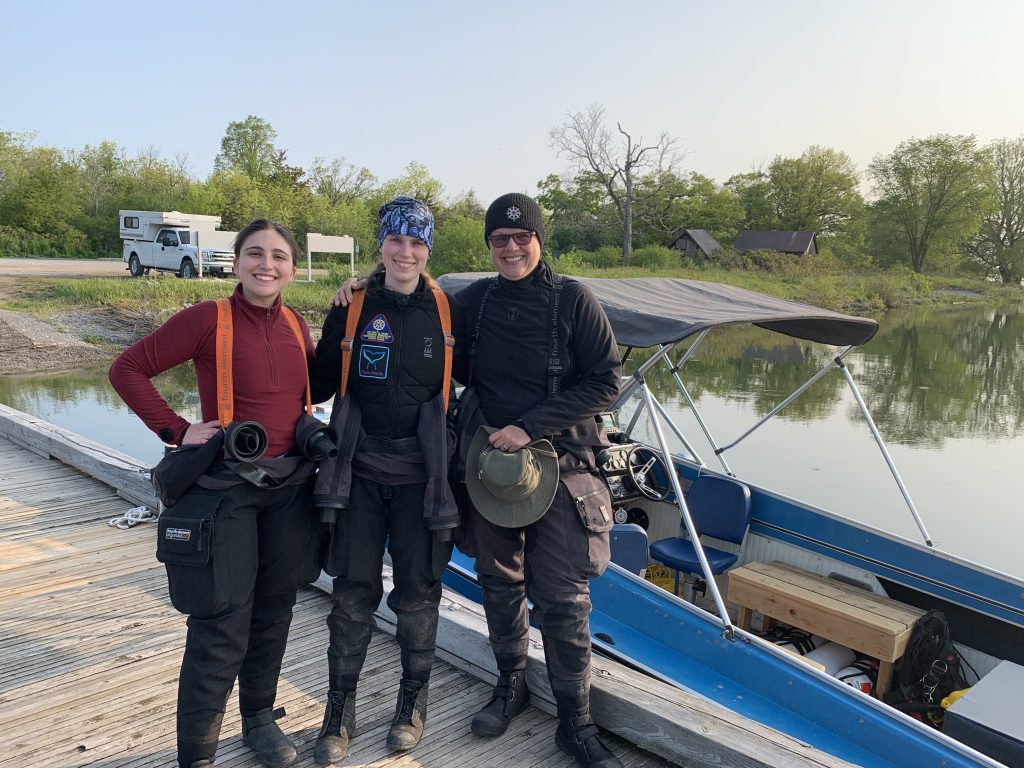
Arriving on site we deployed a new shotline and then proceeded to gear up as a team, carefully checking each other’s equipment which we would be depending on in the cold dark depths below.
As we entered the water, I was filled with anticipation of finally seeing the shipwreck that was beneath my fins. We descended as a group, following the shotline which was disappearing into the darkness below. It felt like I was sinking forever, then suddenly I had a cold shiver run down my spine as I thought about that fateful night just over one hundred years ago which claimed the lives of three crew members and sealed the fate of the OLIVER MOWAT.
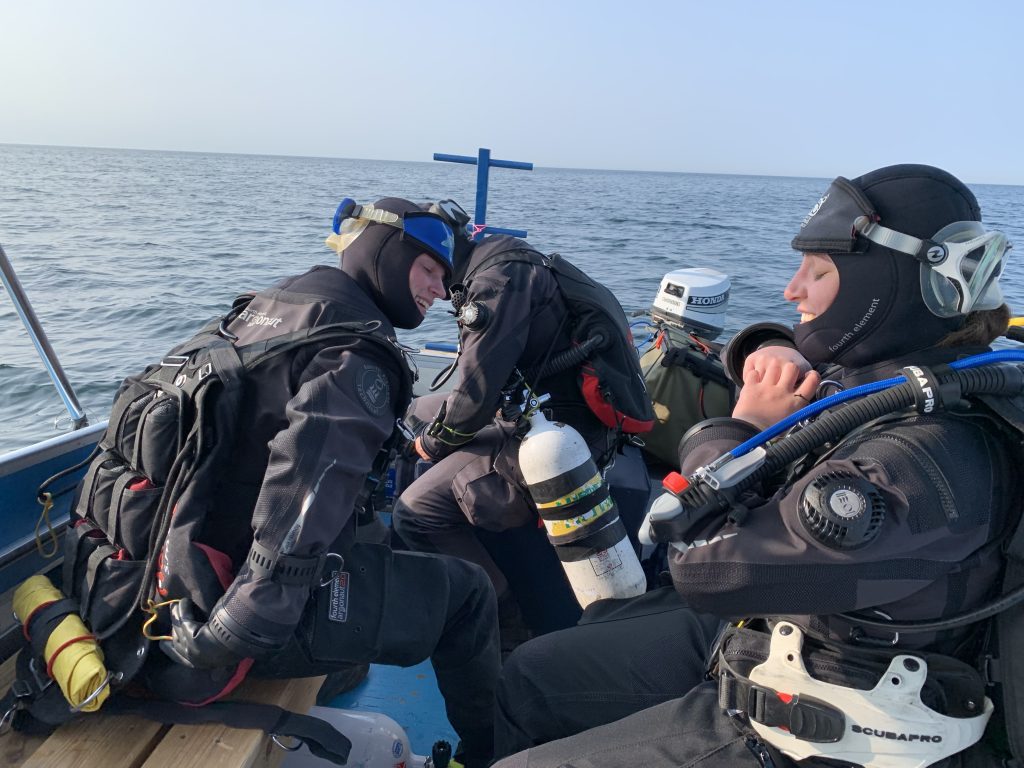
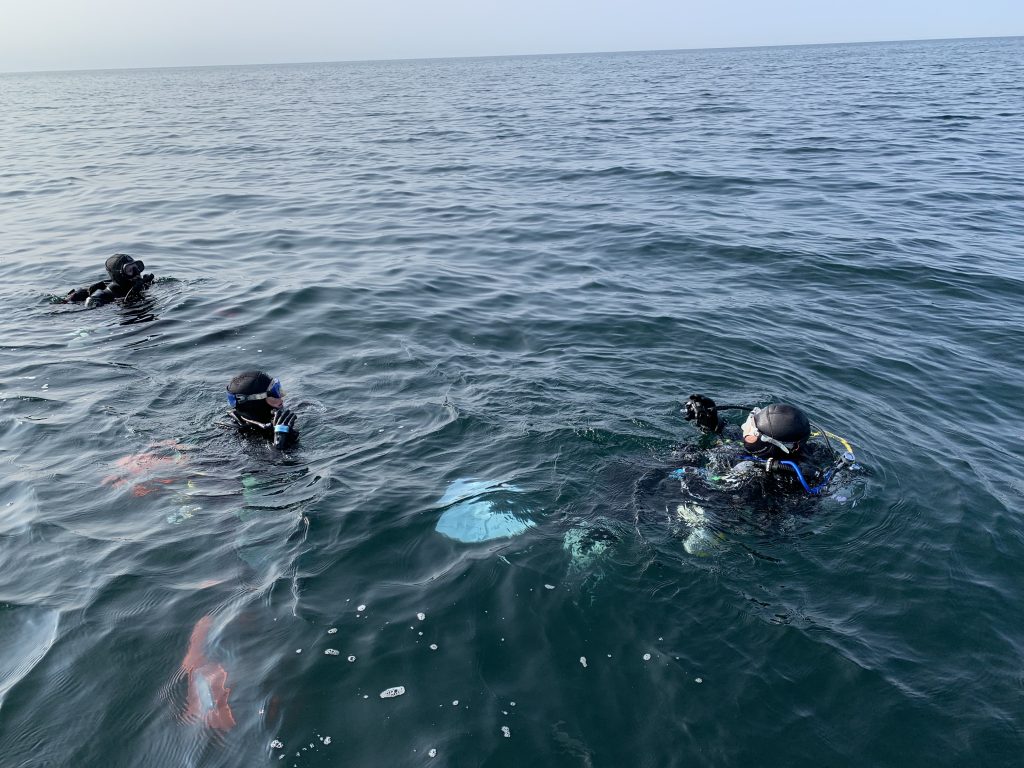
This sobering thought vanished as suddenly a shape appeared out of the gloom beneath me, then as I descended the remaining fifteen meters the visibility completely opened up and the ship’s wheel rose up before me.
She is absolutely gorgeous and has lived up to the tales that I had heard from the Fabulous Four. The shot line had actually landed on the decking, so we carefully moved it off into mud ten meters away from the wreck so there was no potential entanglement hazard.

Glancing at my wrist mounted dive computers, I noted we were 37 meters down and knew at this depth the no decompression dive limit would be just a short fourteen minutes. So, with time being of the essence we each proceeded to our pre-planned assigned tasks. Our goal for this first dive was a complete preliminary survey of the wreck from bow to stern to establish its condition.
While Jill started to capture images, Charlotte and I took out our waterproof sketch pads and started to document details as we proceeded to swim toward the bow forty meters away.
Charlotte noted that the mizzenmast and mainmast were broken off and lying to the starboard side, with the foremast also broken off but laying to port with the crow’s nest still intact.
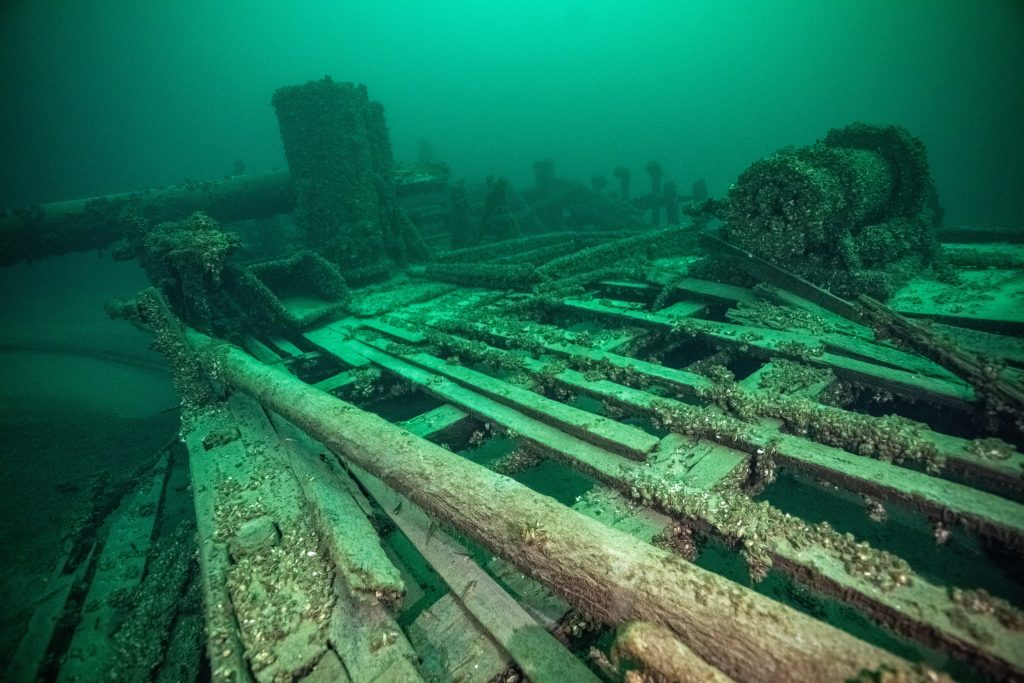
Passing up the portside I was stunned by the size of the hole in the hull where the KEYWEST had collided with her. I could now understand how a schooner this large could sink in just four minutes.
Arriving at the spectacular intact bowsprit, I noticed that we were just about to enter deco, so I signaled to my team to turn the dive and return to the shotline for our ascent back to the world above. Regrettably, taking photos of the bow would have to wait for the next dive.
Again, we headed to the surface as a group, being careful not to touch the shotline; precision buoyancy would be critical during the ascent.
During the five-minute safety stop at three meters I had time to reflect on what I had just experienced. The wreck was picture perfect, sitting completely upright, it was hard to believe that it had been resting on the bottom for over a century. Gliding across her deck had allowed me to slip back into time and for a moment it felt like I was part of the crew during the golden age of Great Lakes Schooners.
This will be a dive that I will remember for a lifetime!
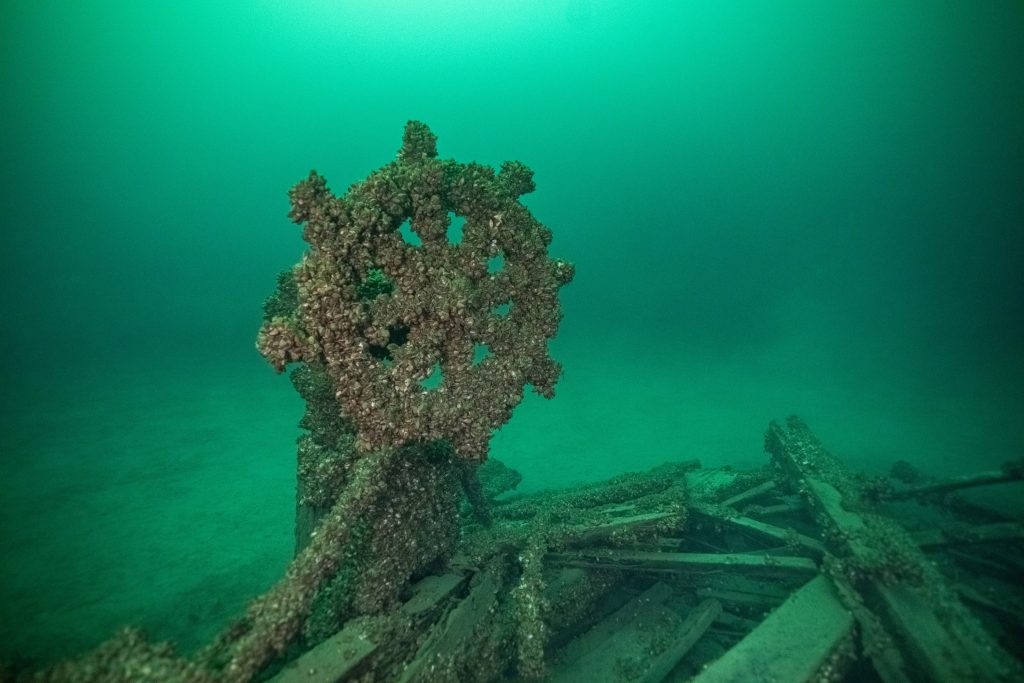
Back on board we could see the excitement reflected in each other’s eyes and we could not stop talking about what we had just experienced. Today was one of those Perfect Moments, the visibility was an exceptional 30 meters so capturing images would be the primary goal of the second dive.
We would spend the next hour refining our dive plan based on our notes from the first dive to ensure that we would maximize every precious minute of bottom time to capture as many images as possible.
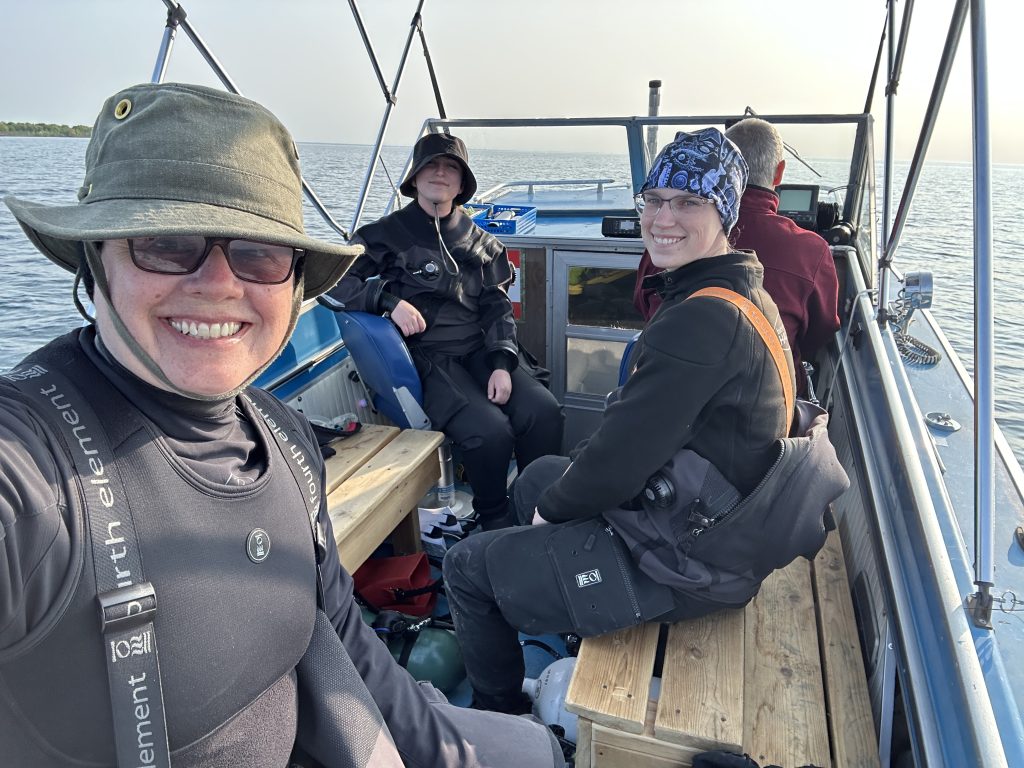
Now familiar with the site, the descent on the second dive went much faster, gaining us an additional precious minute to explore. On this dive we wanted to focus on the two most breathtaking features of the wreck, the bowsprit and the wheel. As we swam the length between them, we noticed many smaller details that we had missed on the first dive.
The foremast fife rail was still intact, including a belaying pin. Fife rails circle the bottom of the masts and are usually destroyed when the masts are broken. Deadeyes were still lining the port and starboard rails; they would have been used to secure the rigging that held the masts upright.
Near the bow was a coal fired donkey boiler which would have generated steam to power a winch to assist the crew.
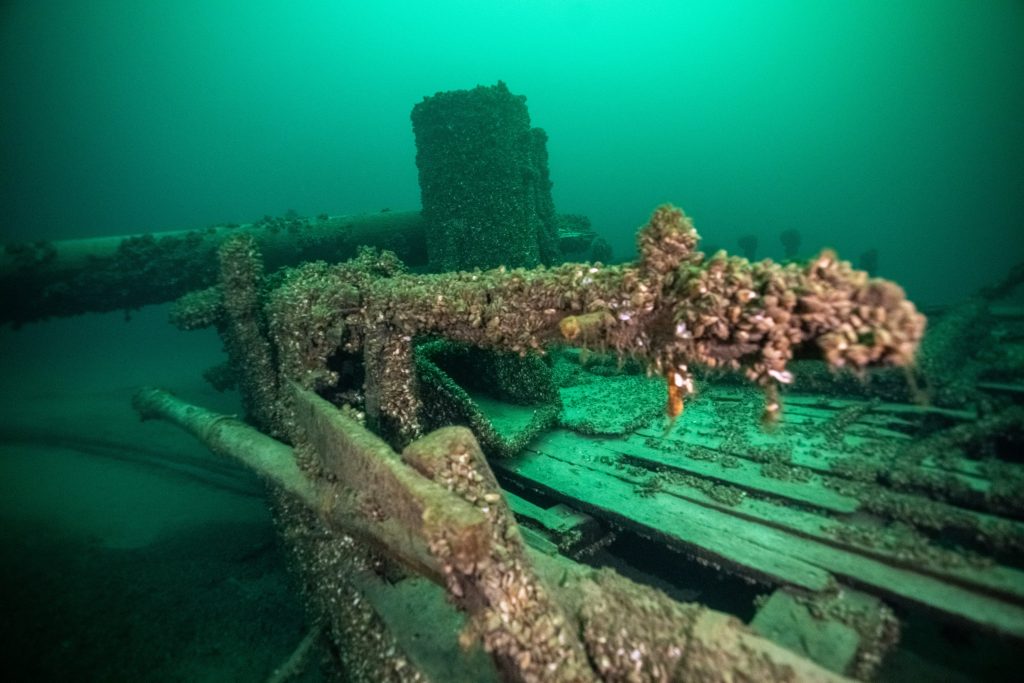
With our goals for the dive achieved and team safety a primary concern, we reluctantly left the wreck as our computers signaled decompression was upon us. Looking down as we slowly ascended, the OLIVER MOWAT was swallowed up by the darkness and would be hidden from sight until the next time that we could return to uncover more of her secrets.